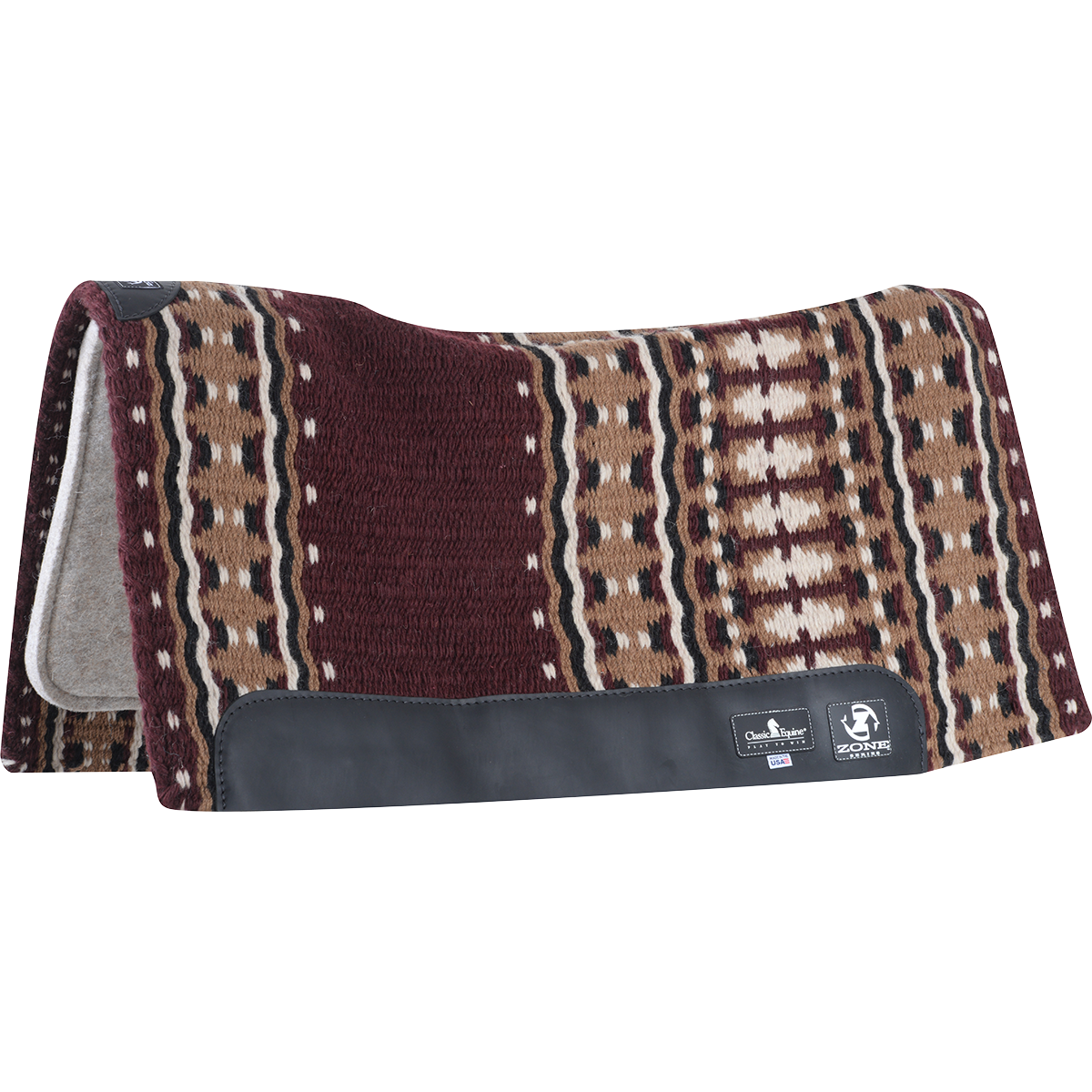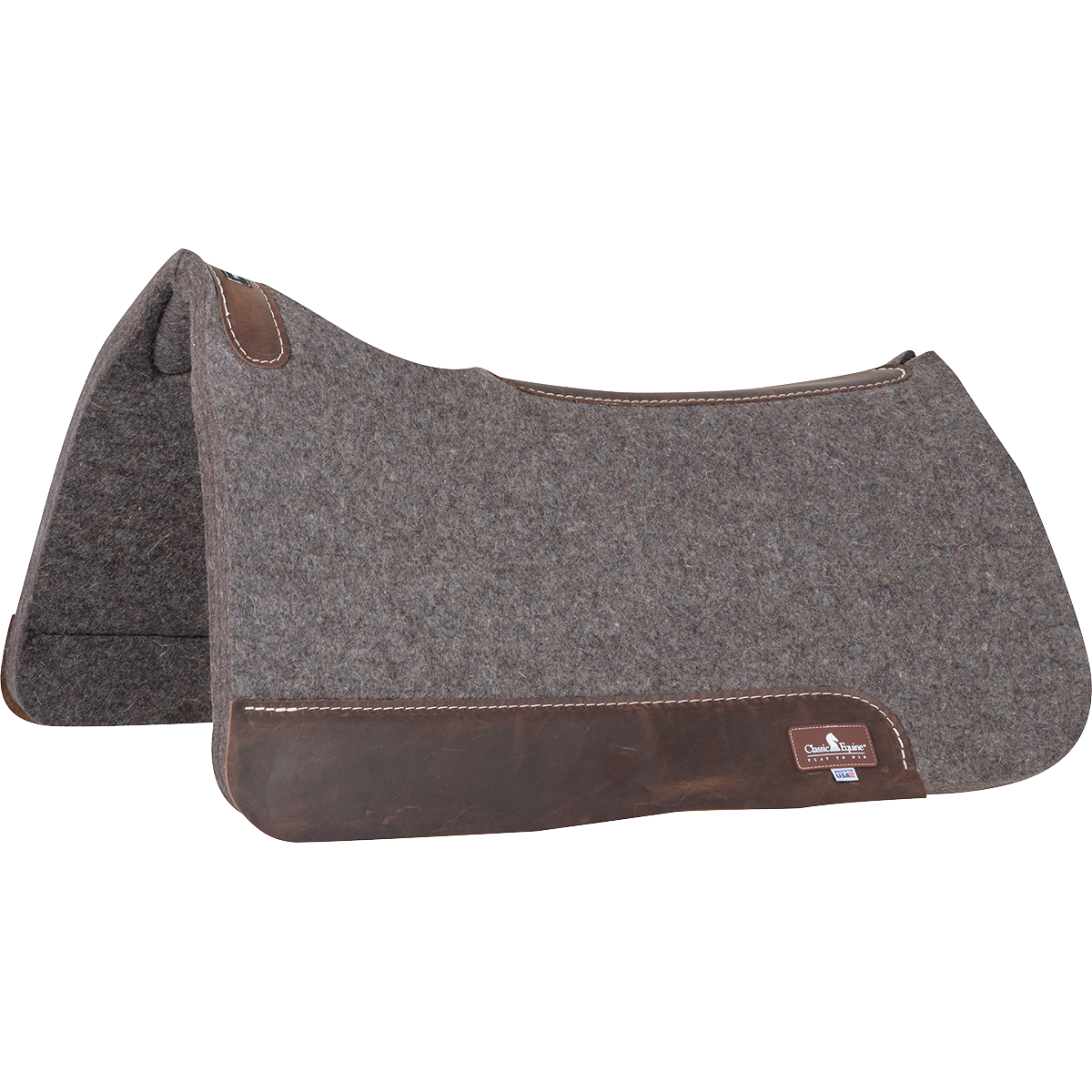Home > Riding > Tack and Apparel > A Cushion of Comfort: Western Saddle Pads
A Cushion of Comfort: Western Saddle Pads
- November 10, 2020
- ⎯ Classic Equine
Owning and riding horses means devoting your all to keeping your horse comfortable and feeling ready to ride. With all of the weight—quite literally—on your horse’s back, it’s important to make sure you use a saddle pad that offers sufficient cushion, breathability, shock absorption, and weight distribution.
Why do these things matter?
Whether you’re an all-day adventurer or enjoy short rides in the arena, your horse needs protection from the saddle. Western saddles in particular may require additional support to help distribute and absorb pressure that can cause back soreness. The saddle pad you select will depend on your horse’s body type and type of riding you’ll be doing.

Adding cushion to comfort your horse’s back is quite simple once you understand the functions of a saddle pad and how different types of saddle pads work for various types of riding.
Saddle pads are made from either natural or synthetic fibers. Natural fibers, such as wool, have a natural sweat-wicking and recoil ability. Wool is soft and pliable, which makes it easy to conform to your horse’s back and protect against uneven pressures that are the source of back soreness. Synthetic materials are engineered to protect your horse’s back and have advanced technology that allow the pads to reduce injury and stress. Saddle pads made of synthetic materials are easy to care for and are long lasting.
If you find yourself in the arena performing difficult maneuvers you want more than a pad that fits well, you want a pad that will absorb shock that comes from hard stops and turns. A saddle pad with shock-absorbing material that becomes dense upon impact or material that dissipates energy will protect your horse’s back from both the weight of the saddle and you.

For all-day rides, you’ll want a saddle pad that’s breathable and wicks away moisture while protecting your horse’s back. Your horse will be able to work longer with materials that leave the skin cool and dry. Both natural and synthetic materials can have breathability and moisture-wicking properties, but it’s important to note that natural materials must be carefully cared for to maintain the naturally occurring capabilities.
Ultimately saddle fit will protect your horse’s back the most. If you’re unable to purchase a saddle that fits your horse, consider consulting a saddle fitter and using shims to correct the fit. Shims can be used with any saddle pad. However, you can select saddle pads with two layers that allow you to place the shim between the layers of material, so the shims aren’t unsightly to look at while you’re riding down the rail in the arena.
Your horse works hard for you every ride. You should work hard to keep your horse comfortable.
This article is sponsored by: Classic Equine.





